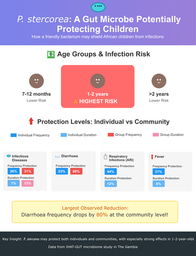An Unexpected Bacterial Phenomenon Enables Safer Science
Published in Microbiology, Protocols & Methods, and Plant Science

One survival strategy utilized by Coxiella burnetii, the bacterial causative agent of human Q fever, is the membrane expression of a sugar molecule called lipopolysaccharide (LPS). LPS enables C. burnetii to cause disease and “hide” from host immune cells (1), thereby facilitating its survival and dissemination. C. burnetii LPS exists in many different forms, with the longest form (phase I) associated with the most severe form of disease and the truncated form (phase II) correlated with a lack of disease.
Lab work with C. burnetii is highly regulated, with most strains requiring enhanced biological containment. A single strain, NMII (2), can be manipulated in lower biocontainment settings due to its perceived inability to cause disease resulting from the strain’s truncated LPS. After infecting guinea pigs with the NMII strain and cultured surviving bacteria from the spleen, we were surprised to see elongated LPS compared to the truncated form expressed by NMII at the time of inoculation. We re-infected guinea pigs with NMII bacteria expressing elongated LPS and these animals experienced disease, confirming that virulence was restored along with LPS elongation. Through genetic investigation, we were able to identify the mechanism of LPS elongation, a three-base pair slipped strand mutation reversion.
This discovery raised safety questions regarding the use of the NMII strain in lower biocontainment. To address these concerns, we created a variant of the NMII strain that lacks the entire gene responsible for LPS elongation. This strain cannot undergo LPS elongation and thus, cannot cause disease in guinea pigs, and presumably, in humans. We propose this strain as an alternative to NMII, addressing safety concerns raised by these findings. This work is a clear illustration of the unintended benefits of fundamental discovery research, particularly in areas of rare and neglected diseases. The identification of a novel LPS elongation mechanism led to the development of a safer C. burnetii strain, thus enabling the continuation of research on this important pathogen.
Acknowledgements
We thank Rose Perry-Gottschalk for creating the accompanying illustration. This work was supported by the Intramural Research Program of the National Institutes of Health, National Institute of Allergy and Infectious Disease.
Citations
1. J. G. Shannon, D. Howe, R. A. Heinzen, Virulent Coxiella burnetii does not activate human dendritic cells: role of lipopolysaccharide as a shielding molecule. Proc Natl Acad Sci U S A 102, 8722-8727 (2005).
2. A. T. O'Rourke et al., Genomic analysis of phase I and II Coxiella burnetii with restriction endonucleases. Journal of general microbiology 131, 1543-1546 (1985).
Follow the Topic
-
Nature Communications

An open access, multidisciplinary journal dedicated to publishing high-quality research in all areas of the biological, health, physical, chemical and Earth sciences.
Related Collections
With Collections, you can get published faster and increase your visibility.
Clinical trials 2025
Publishing Model: Open Access
Deadline: Dec 31, 2025
Women's Health
Publishing Model: Hybrid
Deadline: Ongoing


Please sign in or register for FREE
If you are a registered user on Research Communities by Springer Nature, please sign in